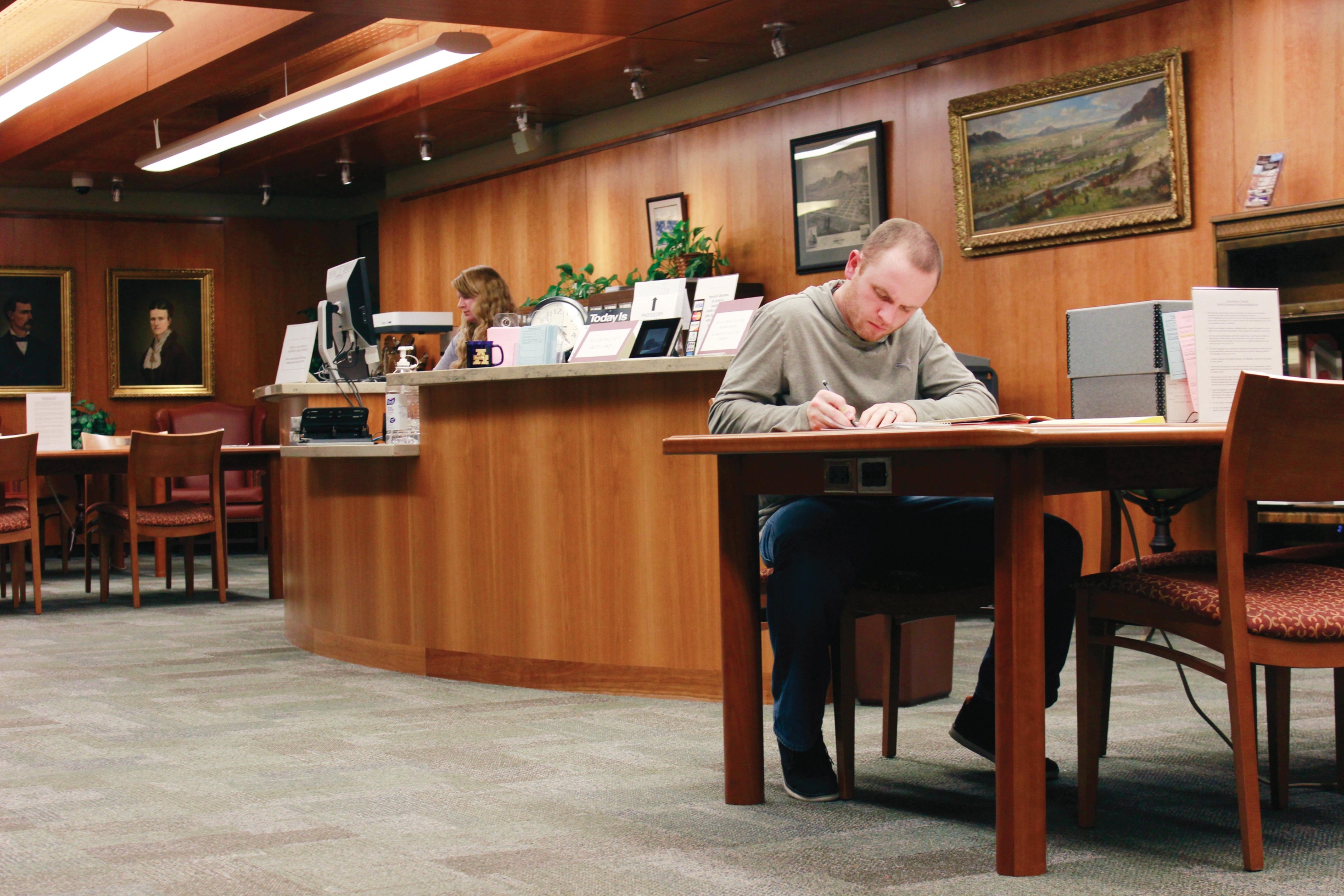USU students connect with past thru SCA
Special Collections and Archives is tucked away on the lower level of the Merrill-Cazier Library. Coming out of the elevators, it’s not hard to notice the wooden replica of the sculpture “Lion Lucerne” by David Hughes, an early 20th century carpentry professor at USU.
The main entrance of the SCA leads to the Tanner Reading Room, where all who want to research and learn about the archives can come to study. This room offers a glimpse of the variety of items which can be found, such as the skull of Old Ephraim, a 9-foot-11-inch grizzly bear, the last known to have lived in Cache Valley.
The Hatch Room, furnished with dark, Victorian carved wood, holds a 15th century iron faldistorium, 18th century portrait paintings and English history books. The room, referred to by some as the “Harry Potter room,” is home to a number of other historical donations for all to use and study. Only pencils are allowed in this room, and the items cannot be checked out.
“It’s an incredible department that not a lot of people know is here,” said Merrisah Yonk, a freshman studying business administration. “People need to know that this is down here and that these documents are here for them. It serves the students and the general public.”
Yonk also she wishes departments in the library would be more active in directing students and public to the archives.
Bradford Cole, the assistant dean for the SCA, works in the vaults where archives are preserved. At every turn there is a plethora of magazines, books and diaries.
“It’s really good stuff because it makes things that occurred 150 years ago come alive,” said Riley Parkinson, a senior studying history. “It’s not stuff you find in a textbook. It’s great because it’s something that I can take and I can interpret from my own schooling about what was going on socially and politically.”
By hosting history and English seminars for students, Cole spoke about the value of introducing students to primary sources and first-person accounts that can provide insight and aid research.
Cole gave the example of letters written by a 17-year-old boy, Robert Ridgway, in 1869 to his parents.
“You can feel the emotion between the lines. That drew me in,” Parkinson said of a diary from 1890 that he was studying for a research project. “I think it’s invaluable. To me, it brings the past alive.”
Cole said recently the SCA has been collecting cookbooks, some dating back to 1545. They discuss boiling up different animal parts as part of recipes and relating it to religious practices.
Black and white photographs of beat generation poets are currently on display at the Nora Eccles Harrison Art Museum as part of an exhibit by the SCA as well as a recording of Allen Ginsberg’s first complete reading of the poem “Howl.”
From beat generation poetry to 16th century cookbooks to a giant bear skull, the SCA provides a wide variety of resources for students.
– diego.mendiola.93@gmail.com

